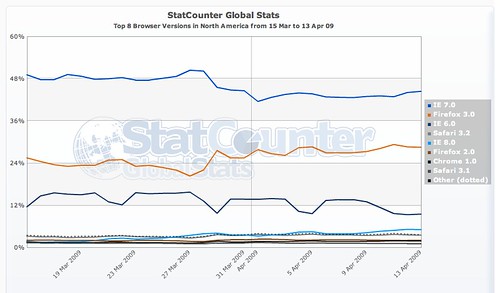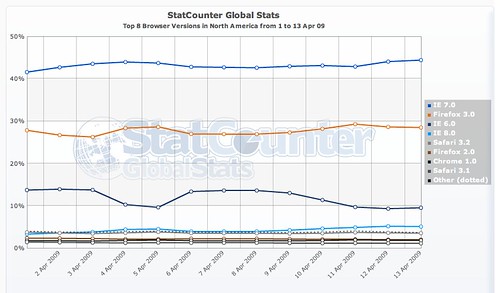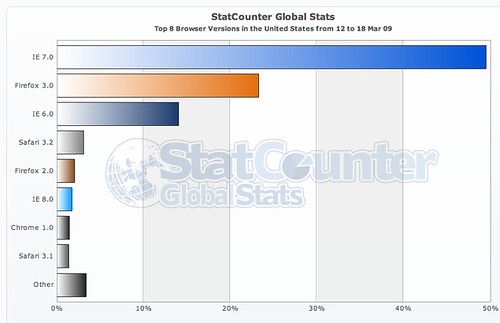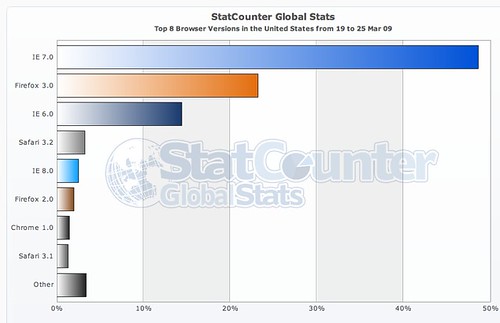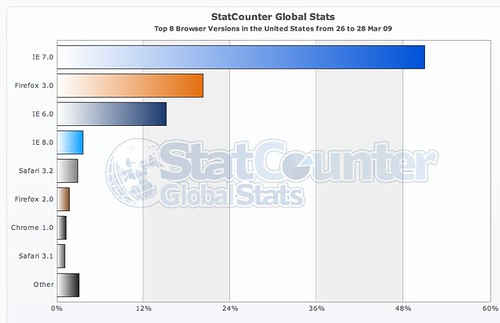 From my IPV4 database, here are the the Registrar and Country statistics as of April 10 2009.
From my IPV4 database, here are the the Registrar and Country statistics as of April 10 2009.
Since the last update, ARIN has crossed the 1.6B IPV4 address boundary, adding nearly 5M IPV4 Addresses. APNIC matched this growth by adding an additional 5M new addresses of its own.
Registrar Number of IPV4 Adresses
--------- -----------------------
arin 1,600,640,000
ripencc 564,850,616
apnic 528,362,496
lacnic 79,931,136
afrinic 21,526,272
The majority of the growth in APNIC continues to be driven by China, which added an additional 4M IPV4 addresses since March 14.
Country Number of IPV4 Adresses
------------------------------------------ -----------------------
UNITED STATES 1472741888
CHINA 191119104
JAPAN 152412672
EUROPEAN UNION 114155680
GERMANY 85174424
CANADA 75846144
KOREA, REPUBLIC OF 72142592
UNITED KINGDOM 70675288
FRANCE 68370880
AUSTRALIA 36573184
ITALY 32202432
BRAZIL 29754880
TAIWAN, PROVINCE OF CHINA 24680704
RUSSIAN FEDERATION 24529224
SPAIN 21794976
MEXICO 21504000
NETHERLANDS 21290792
SWEDEN 18982304
INDIA 18285568
SOUTH AFRICA 14009344
POLAND 13869704
TURKEY 10417600
DENMARK 9281632
FINLAND 8932864
ROMANIA 8640512
SWITZERLAND 8249320
HONG KONG 8206848
NORWAY 7425584
AUSTRIA 7290592
ARGENTINA 7239424
INDONESIA 6997248
VIETNAM 6707456
BELGIUM 6412416
NEW ZEALAND 6115072
CZECH REPUBLIC 6040960
UKRAINE 5507904
THAILAND 4743936
CHILE 4731136
PORTUGAL 4473952
SINGAPORE 4410880
COLOMBIA 4261632
IRELAND 4203680
MALAYSIA 4147456
PHILIPPINES 4070656
ISRAEL 3949760
GREECE 3834624
HUNGARY 3716480
VENEZUELA 3693056
BULGARIA 3334912
EGYPT 2731008
SAUDI ARABIA 2703616
UNITED ARAB EMIRATES 2286848
LITHUANIA 2009216
IRAN, ISLAMIC REPUBLIC OF 1894400
PERU 1715968
PAKISTAN 1637632
CROATIA 1623136
SLOVAKIA 1611520
COSTA RICA 1502208
LATVIA 1384448
SLOVENIA 1277952
PANAMA 1130240
MONTENEGRO 1083648
ESTONIA 1021464
As China’s Internet growth continues, the number of addresses assigned to ISPs in that nation will continue to grow. However, it is unlikely that China will equal or exceed the US mainly due to the movement to mobile devices, which will be managed using private IP space rather than public IPs.
 It’s official. According to the IE Dev Blog at MSDN, MSIE8 will be the direct upgrade path via Windows Update in the third week of April. [here]
It’s official. According to the IE Dev Blog at MSDN, MSIE8 will be the direct upgrade path via Windows Update in the third week of April. [here]

